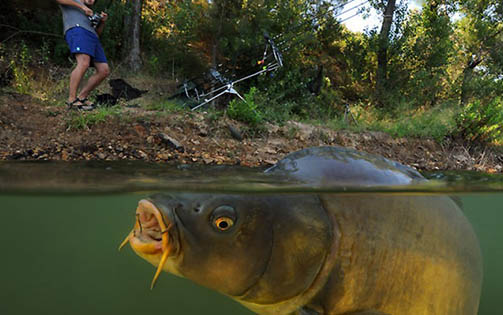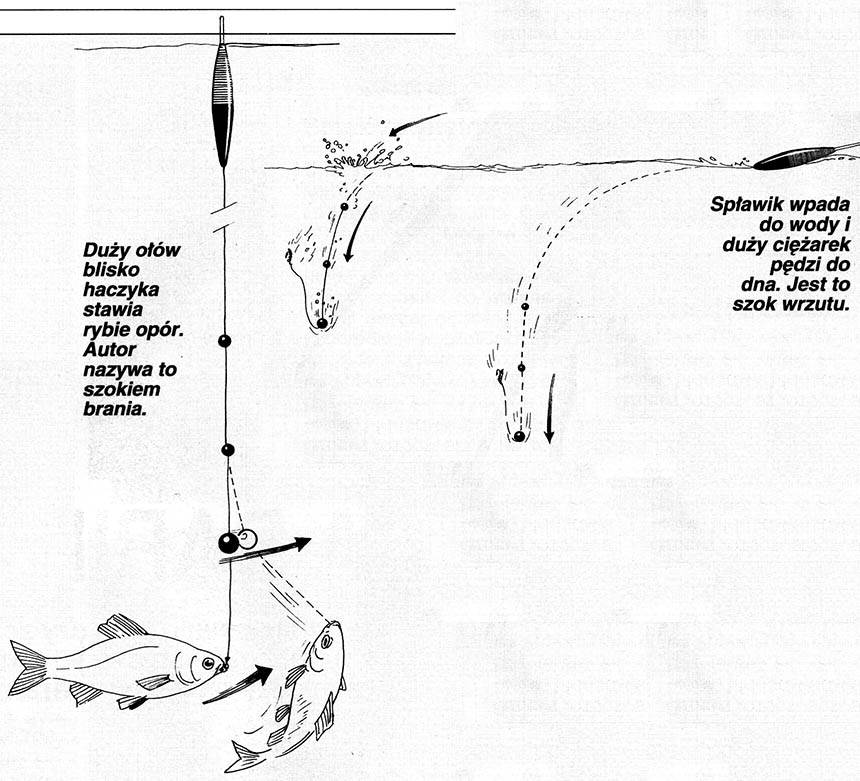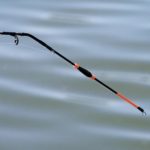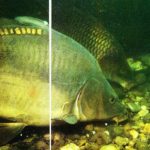 Smak podanej przynęty decyduje ostatecznie o tym, czy zostanie ona wzięta przez rybę. Zmysł smaku jest ostatnią barierą między rybą a wędkarzem.
Smak podanej przynęty decyduje ostatecznie o tym, czy zostanie ona wzięta przez rybę. Zmysł smaku jest ostatnią barierą między rybą a wędkarzem.
W celu stwierdzenia smaku danego pokarmu, ryba wciąga go do jamy gębowej. Smakowanie i ewentualne wyplucie -trwa ułamki sekundy. W moim laboratorium prowadziłem doświadczenia z okoniami mierząc ten czas stoperem. Potrzebują one 1/4 sekundy, aby stwierdzić przydatność pokarmu do spożycia.
Sandacze okazywały się jeszcze szybsze, natomiast pstrągi i sumy potrzebowały więcej czasu. Nie ma to jednak znaczenia w praktyce wędkarskiej, ponieważ do zauważenia brania i zacięcia potrzebujemy znacznie więcej czasu.
Gary Klein, znany w Ameryce łowca okoni, jest człowiekiem o niesamowicie szybkim refleksie. Przyznaje on mimo wszystko, że jest zbyt wolny, aby zaciąć, nawet gdy ryba bierze na jego własnych oczach. Czy pochwycony kąsek zostanie przez rybę połknięty, czy też natychmiast wypluty, zależy od błyskawicznej kontroli chemicznej organu zmysłowego, chroniącego ryby przed pomyłkami. Zmysł smaku decydujący o przydatności przynęty do spożycia, stanowi zatem między
wędkarzem a rybą ostatnią barierę, którą wędkarz powinien starać się pokonać. Większość sztucznych przynęt oddziaływuje na wzrok ryby, zmysł słuchu lub linię boczną. Niezwracanie uwagi na zmysł smaku, może okazać się błędem taktycznym. Wielu wędkarzy sądzi, iż używane przez nich przynęty sztuczne jak: plastykowe robaki, „jigsy”, woblery, czy metalowe błystki, są bardzo atrakcyjne dla ryb. W rzeczywistości jednak mogą one budzić uczucie wstrętu. Z tego względu powinno się podczas połowu ryb drapieżnych, chcąc je przechytrzyć, wykorzystać ich zmysł smaku. Nie wszystkie gatunki ryb mają dobry wzrok, słuch czy węch, ale wszystkie posiadają doskonale rozwinięty zmysł smaku, który pomaga w sortowaniu jadalnych i niejadalnych rzeczy.
Wędkarze ignorujący zmysł smaku ryb, muszą pocieszać się słabszymi efektami w połowach. Na szczęście istnieje wiele możliwości uatrakcyjnienia przynęty tak, aby stała się ona bardzo smaczna dla ryb. Trzeba tylko to zrozumieć i wiedzieć, jak podejść do sprawy.
Smak wewnętrzny.
Pręciki smakowe u ryb są ułożone inaczej niż u człowieka. Znajdują się one w całej jamie gębowej i tworzą wzory, charakterystyczne dla danego gatunku ryb.
Wiele ryb, jak na przykład: łosoś, pstrąg, karp, sum czy okoń, mają w podniebieniu, zaraz za przednimi zębami górnej szczęki, szczególnie wrażliwe partie smakowe. Podniebienie pstrąga o długości 20 cm, zawiera około 2500 pręcików smakowych. Dla porównania, o wiele większy język dorosłego człowieka zawiera tylko 9000 tychże pręcików. U innych gatunków ryb pręciki smakowe rozmieszczone są także na skrze-lach i w gardzieli.
U suma ułożone są one najgęściej na tukach skrzelo-wych, co pozwala na dokładne odbieranie bodźców smakowych z wody podczas oddychania. W niektórych miejscach ilość pręcików smakowych u suma osiąga 50 sztuk na mm2, a więc 5000 na cm2. Ryby potrafią lepiej niż człowiek wychwytywać smak rozpuszczonych w wodzie substancji. Kwasotę rozpoznają 160 razy lepiej, sól 200 razy i cukier 900 razy lepiej.








